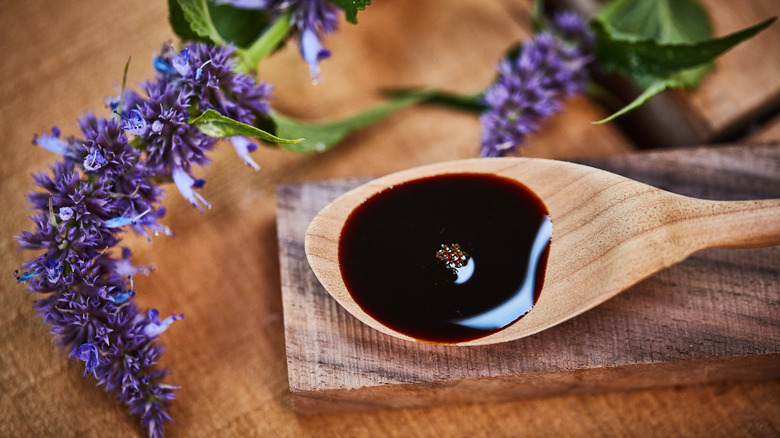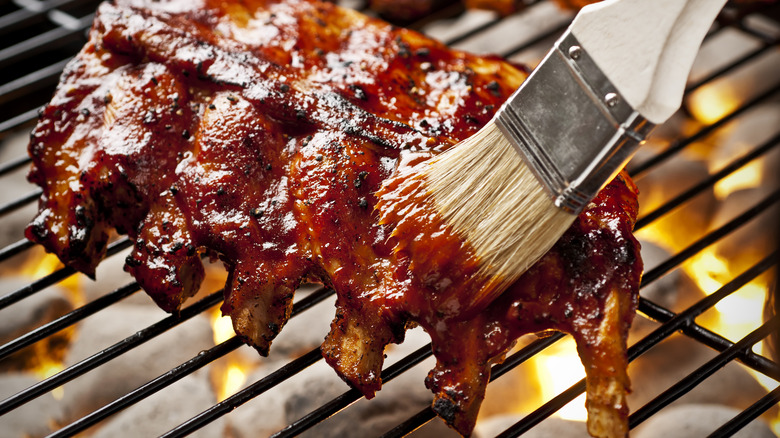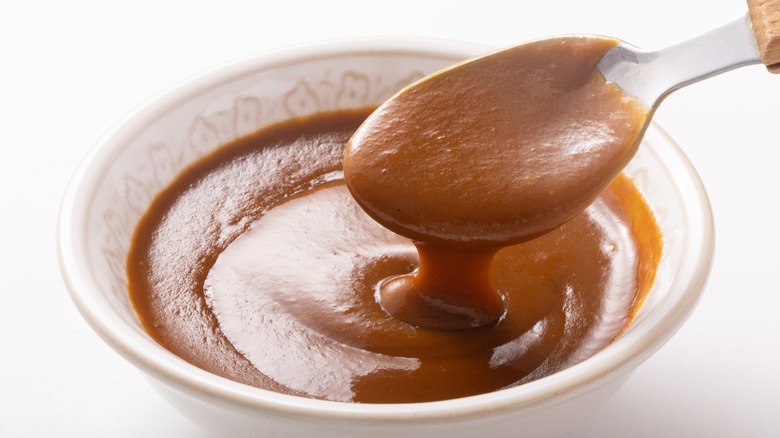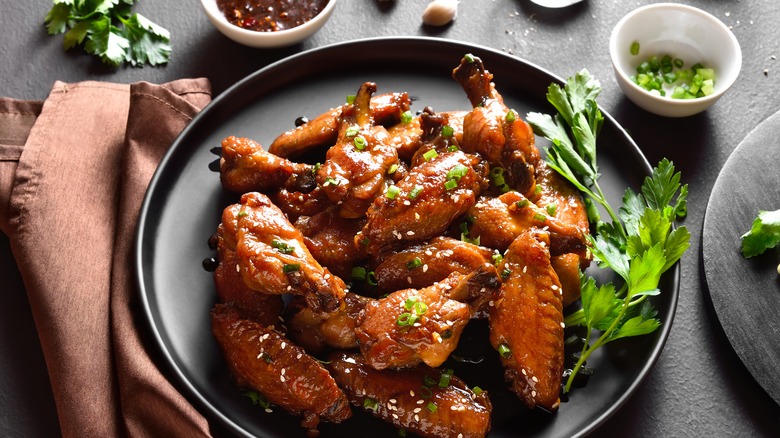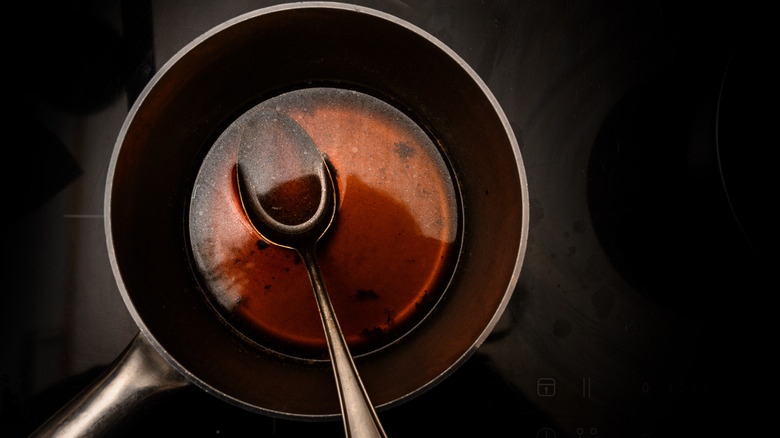The Subtle Difference Between A Glaze And Reduction
Crafting a sauce can feel intimidating. With so many culinary components and different methods of assembly available, what's the best combination for a dish? So, for a solid starting point, investigate fundamental sauce creation techniques.
Reductions and glazes are a great introduction. The methods may feel interchangeable; after all, it can be difficult as a diner to even differentiate between the two. However, nuanced differences in the details give each its respective identity.
A reduction is when a liquid simmers down, which makes the contained aromatics meld and intensify. Especially interlinked with French cooking, it's a process that involves patience but rewards with a rich creation. Meanwhile, a glaze is generally a sugar-based sauce made adherent and shiny to coat a cooked food. It's that delicious gooey topping on a cookie or sticky coating on ribs. Each respective sauce is used in different ways but elevates dishes in their distinctive manner, making them practical culinary techniques worth knowing.
What is a glaze?
Glazing is all about attaining a beautiful, shiny exterior on proteins, vegetables, and desserts. This is most frequently achieved by using sugar, which is cooked down to form a sticky coating that adheres to food. The glaze's sugar doesn't exclusively come in powdered or granule form — it can also be honey, varying syrups, and jam. It's combined with a liquid, like stock, milk, or soy sauce. Sometimes, the glaze can also be expanded with fat, like butter or olive oil, which lends it some extra sheen.
The term glazing also encompasses other cooking methods designed to produce a shiny exterior. In China, glazes are crafted with a combination of cornstarch and water and are made to thicken any liquid that arises during cooking. And a glaze also refers to a highly concentrated broth, cooked down to a sticky texture. While the technique encompasses many forms, glazes are dependably integrated into dishes at the end of cooking.
What is a reduction?
A reduction is a straightforward culinary creation — it simply means to simmer down a liquid. The heat is kept on a pan aptly sized for a reduction, evaporating water but leaving other ingredients. This amplifies the flavor and alters the texture, thereby intensifying the foodstuff. Such a technique helps form sauces and increases the flavors of broths in soups and stews. Typically, the initial volume of a sauce is reduced by half or even three-quarters.
Reducing is especially helpful when preparing sauces with alcohol. The evaporation cooks off alcohol — softening boozy notes — while making aromatics more prominent. The method is often used in French cooking, which is why reduction is key to elevating a wine sauce.
Additionally, reductions meld together varying flavors during the cooking process. Flavoring components like herbs and spices are placed into the liquid during preparation, and their essence is cooked into the sauce. Once completed, the result is typically strained to create a smooth texture. The reduction can then be paired with meats, seafood, and vegetables.
A glaze often covers foods right before serving
The magic of a glaze is twofold: It adds a palatable sweet note and elevates the visuals of food, imparting an aesthetic glossy sheen. As a result, it's typically a finishing step, brushed or dipped onto dishes as they near completion. Glazes are predominantly sugar-based, they'll start burning if exposed to heat for too long, so they must be added at the end.
Glazes are used in baking and pastrymaking, covering confections like a tangy and sweet lemon-glazed pound cake or a whiskey caramel-glazed coffee cake. In France, glazing is classically employed for vegetables, with the ingredients cooked in sugary stock.
Glazes act as terrific finishes for prepared meats, infusing flavor without a preemptive marinade. The flavor potential is expansive, from balsamic glazed pork tenderloin to the maltose-based glaze key to Chinese barbecue. Caramelizing sugar with other aromatics opens up a world of flavors. And it's easy to integrate, too.
A reduction is a time-consuming sauce used throughout the cooking process
With their slow-simmering nature, reductions are not a last-minute creation. Although straightforward in premise, this umbrella of sauces is difficult to craft. Varying components go into a pan and are cooked for an extended duration — so there are multiple factors to fine-tune.
Reductions are frequently building blocks for further culinary applications. A notable example includes beef stock and tomato-based espagnole. One of French cuisine's five mother sauces, it is used to flavor soups, risottos, and more. The sauce can then be reduced even further to form a demi-glace, one of the most complex, yet versatile, reductions.
In addition to flavoring dishes during preparation, reductions are frequently served alongside a specific meal. They make for a decadent complement to a protein, like bordelaise sauce, which pairs with a grilled steak. Or, it can be a tasty condiment to have on hand — like beloved balsamic reduction, which goes well on everything from strawberries to salad. While a reduction takes some effort to craft, it can be employed at varying stages of cooking.
